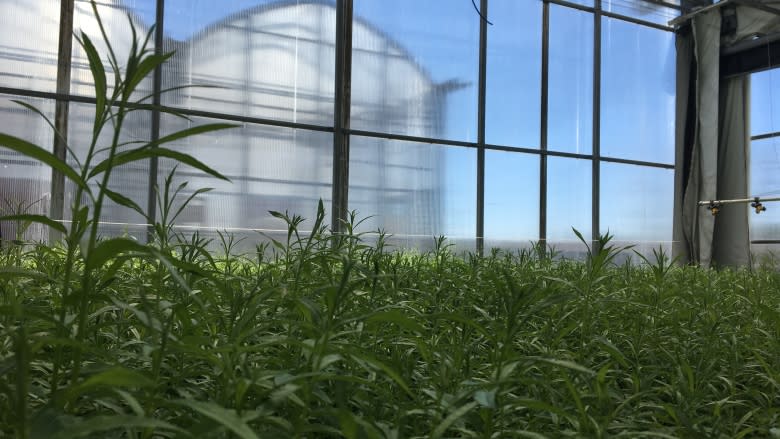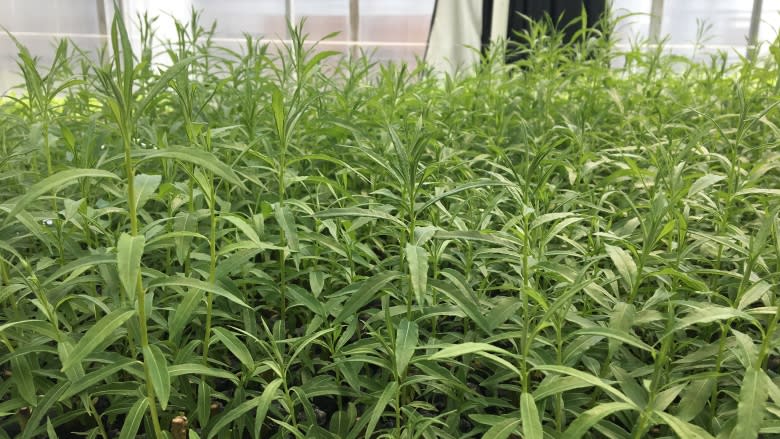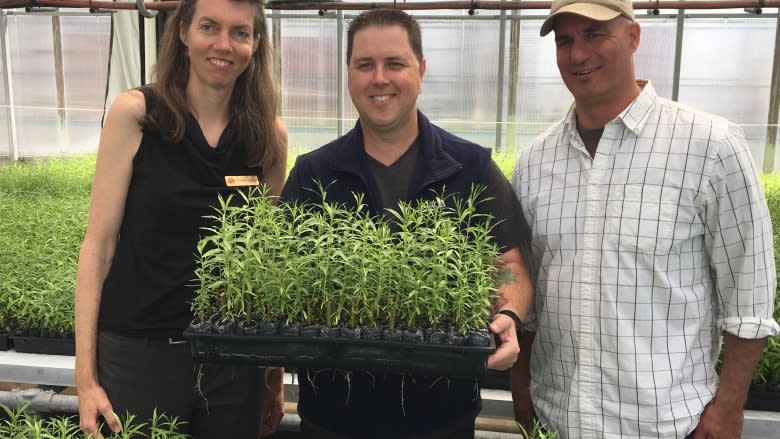Taking root: Willow trees used to bolster province's river systems
In a Fredericton greenhouse, thousands of juvenile willow trees are gaining their strength.
Soon they'll become a valuable part of maintaining the health of the province's river systems, while preventing further degradation.
Over the last two decades, the Kennebecasis Watershed Restoration Committee (KWRC) has been growing the willows to help repair riverbanks in the province. The thick roots of the trees help solidify a bank, preventing erosion and pollution from seeping into the water.
About 15,000 willow trees are currently occupying one grow room at the Atlantic Forestry Centre's greenhouses. Through a partnership with Natural Resources Canada, the facility has been used to help produce the trees.
"Over the last decade or so, we've probably grown about 100,000 willow seedlings" said Ben Whalen, the project manager of the KWRC.
The population of trees they've produced in the past is so healthy, Whalen said this year's crop was created from the cuttings of first generation restoration willows planted over the past 15 years.
Along with protecting river banks from erosion, Whalen said the trees do a lot to keep nasty elements out of the water.
"[They] intercept some of the unwanted nutrients and pollution from running off the stream banks and into the river," said Whalen.
"So it improves water quality as a whole."
Along with being extremely useful in the wild, John Letourneau, who manages the greenhouses, said the trees don't require much to grow. The facility can grow the trees in about six weeks, after the conservation group supplies the cuttings.
"It helps protect fragile environments and it's a whole lot of fun, really," Letourneau said.
Over the past three years, Whalen's group has expanded the project to include other conservation groups. Now the willows will go to watersheds of the Hammond River, Nashwaak River, Petitcodiac River, and the Belleisle Bay.
In 2017, Marieka Chaplin, executive director of the Nashwaak Watershed Association, said they planted thousands of saplings in the Marysville area. But after this spring's flooding, she said it's not yet known how they fared.
"We do know the willows do take quite a beating," said Chaplin "so we are concerned and we will go in and replant and help to encourage the growth and survival of the shoreline willows."
Whalen said it's easy to see where the trees have already made a difference. With the before and after perspective, he said river banks once severely eroded are now much more stable.
"Even when waters come up, those banks aren't as susceptible to swift changes and drastic changes due to erosion" he said.





